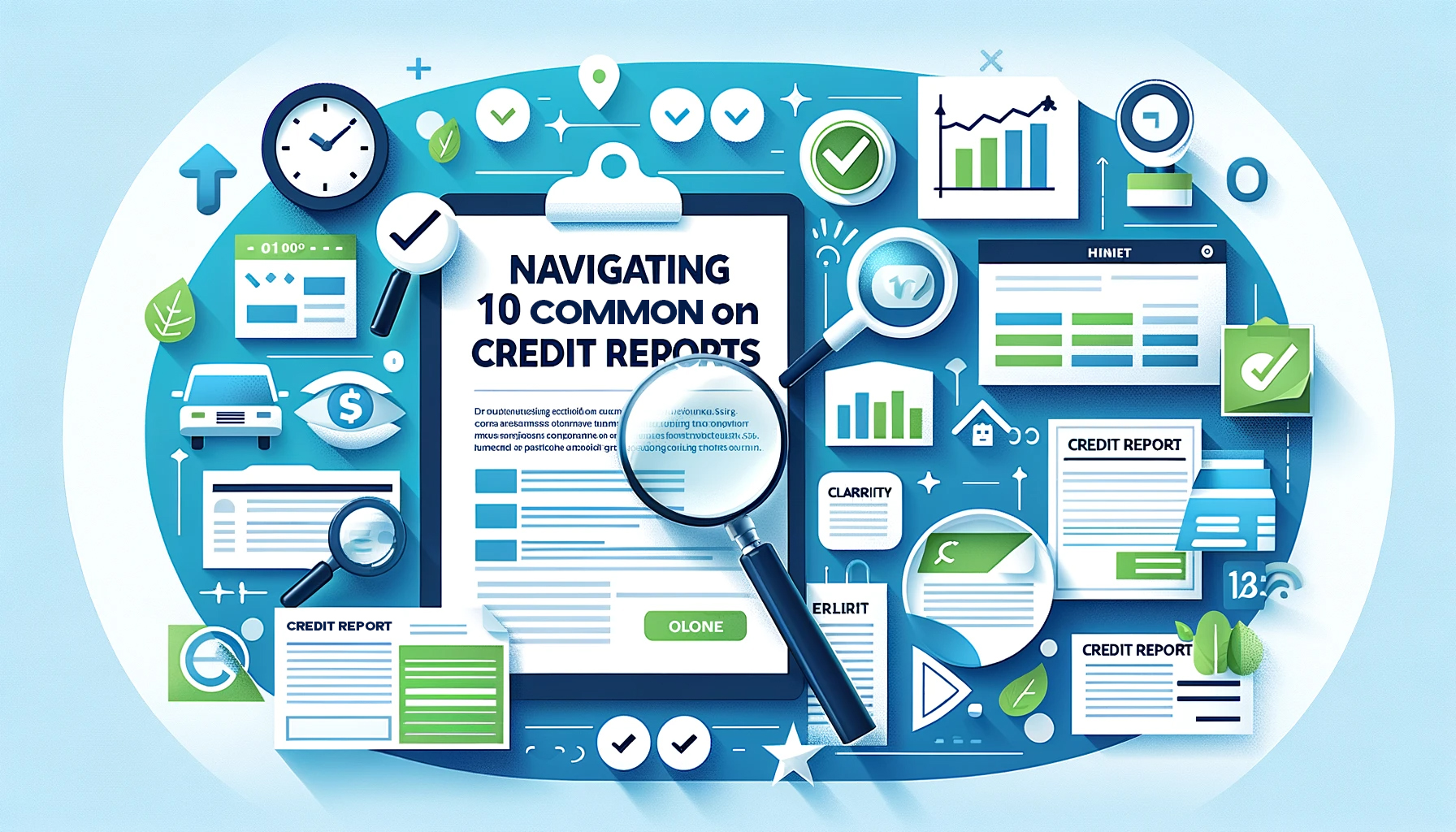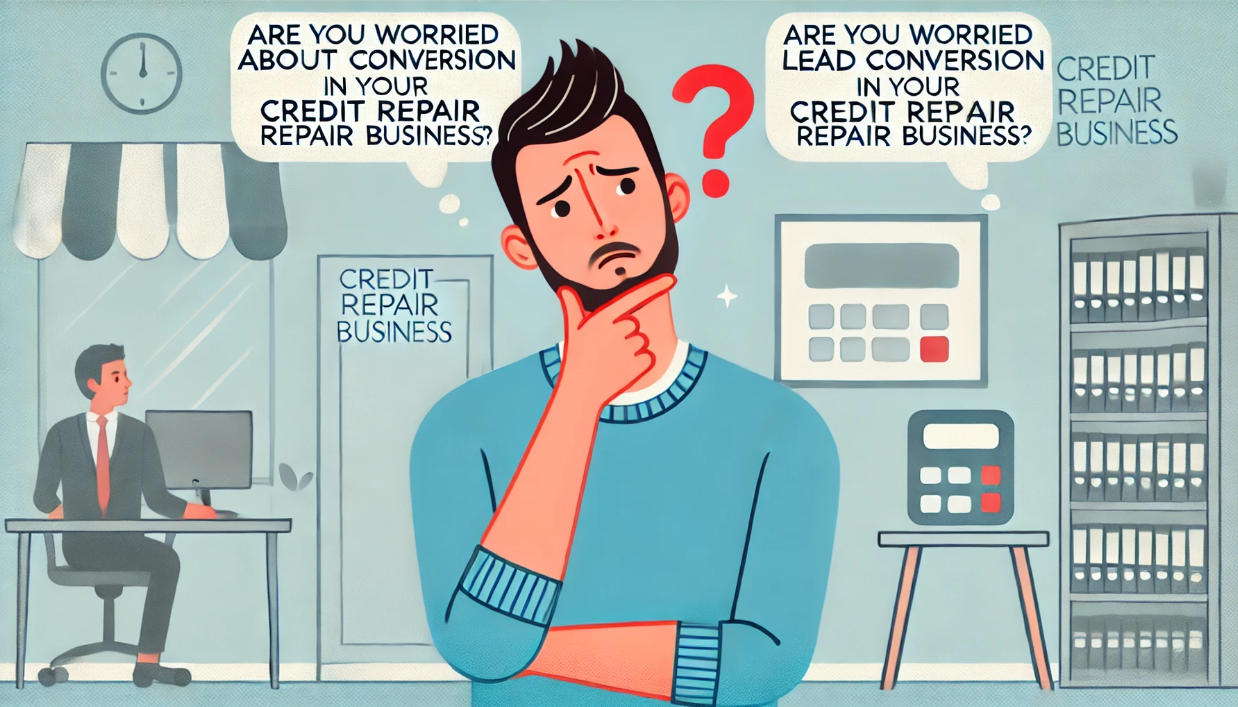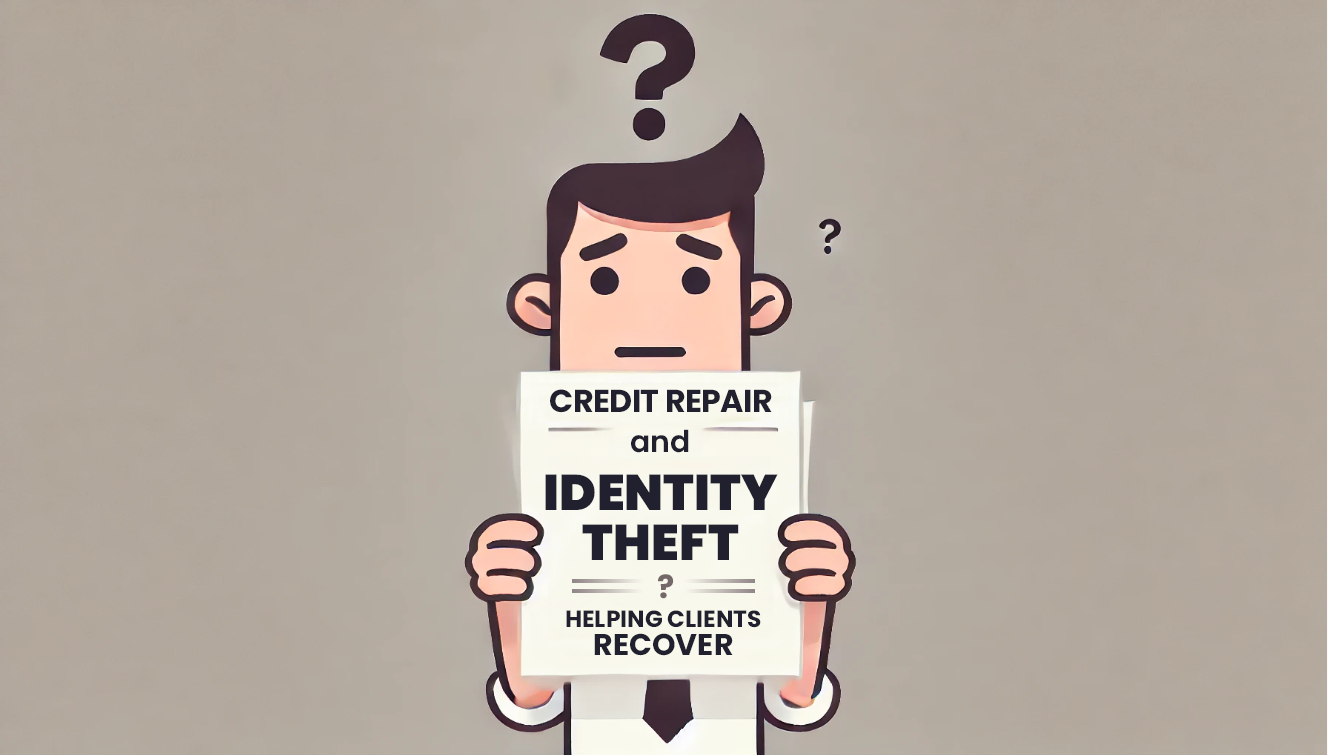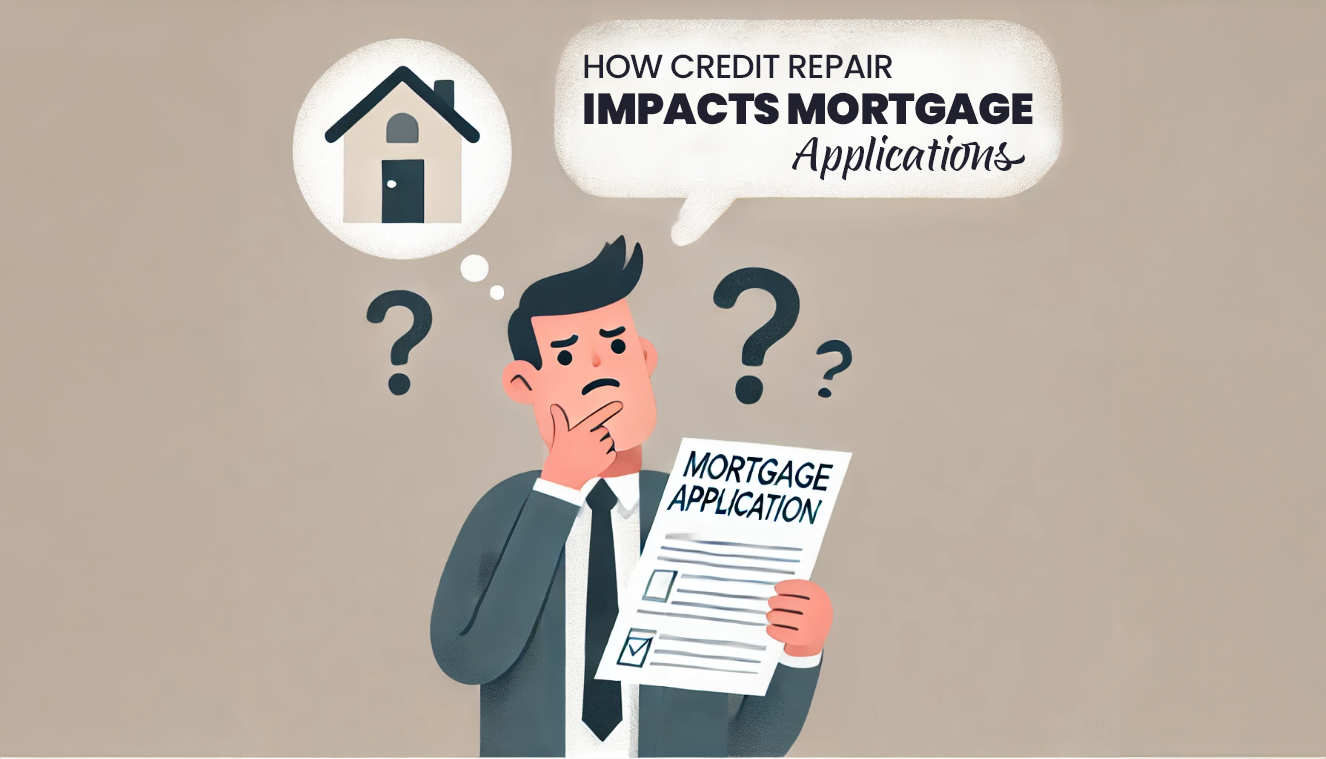Top 10 Common Errors on Credit Reports
In the intricate realm of credit repair, businesses encounter a spectrum of challenges, particularly when navigating the common errors on credit reports. Errors in these reports are more than just a consumer concern; they profoundly influence your clients’ financial profiles and, by extension, your business’s efficiency and reputation.
This comprehensive guide aims to equip you with effective strategies to identify and rectify these errors, ultimately enhancing the quality of your service delivery.
Identifying and Addressing 10 Common Errors on Credit Reports
In business credit repair, a primary and essential task is the identification and disputing of common errors on credit reports. These common errors on credit reports can span a broad spectrum, ranging from minor inaccuracies in financial data to more complex issues like identity errors. Let’s discuss the 10 most common errors found on credit report below:
Misreported Payments:
- Nature of the Error: Payments inaccurately reported as late or missed are common and often stem from clerical mistakes or miscommunications between creditors and credit reporting agencies. This type of error can occur due to a variety of reasons such as delays in payment processing, data entry errors, or even electronic transfer issues.
- Identification Strategy: To identify these errors, meticulously compare client payment records with their credit report entries. This process involves obtaining detailed payment histories from clients, including bank statements and creditor statements, and cross-referencing each payment with the corresponding entry on the credit report.
- Impact on Clients: Misreported payments can significantly damage a client’s credit score. Credit scores, which are heavily influenced by payment history, can drop due to these inaccuracies. This decline in credit score can lead to higher interest rates on loans and credit cards, and in some cases, denial of credit or loan applications.
- Rectification Approach: To rectify misreported payments, gather all relevant payment documentation such as bank statements or payment confirmations from creditors. Submit these documents to credit bureaus along with a detailed dispute letter. It’s crucial to follow up regularly to ensure the error is corrected and the client’s credit report is updated.
Identity Errors:
- Nature of the Error: Identity errors occur when a credit report contains incorrect personal information. This can be as simple as a misspelled name or as complex as having another person’s account information in your client’s report. Such errors can happen due to data entry mistakes or mix-ups in credit bureau files.
- Identification Strategy: Scrutinize all personal information on credit reports for accuracy. This includes checking names, addresses, social security numbers, and employment details. Compare this information with personal identification documents and client records.
- Impact on Clients: Identity errors can lead to credit denials since lenders may not be able to verify the client’s identity correctly. It can also result in a mixed credit file, where your client’s credit information gets entangled with another individual’s, often leading to a distorted credit picture.
- Rectification Approach: File disputes with credit bureaus to correct any erroneous personal information. Provide copies of identification documents such as a driver’s license or social security card to substantiate the claim. Ensure that all credit bureaus make the necessary corrections, as changes with one bureau do not automatically reflect with others.
Outdated Information:
- Nature of the Error: Credit reports sometimes include outdated information. For instance, debts that have been paid off or discharged may still be listed, or accounts older than seven years (ten years for bankruptcies) might not have been removed. This error typically occurs due to an oversight by credit bureaus or creditors in maintaining current data.
- Identification Strategy: Review the dates associated with each account listed on the credit report. Confirm that all accounts adhere to the credit reporting time limits. Pay special attention to negative items like collections, bankruptcies, or late payments, as these have a substantial impact on credit scores.
- Impact on Clients: Outdated information can present a misleading financial picture of a client. It may suggest that they have a higher level of debt or more negative credit events than they do, negatively affecting their creditworthiness.
- Rectification Approach: Request the removal of outdated information by filing a dispute with the credit bureaus. Include supporting documents, such as account statements or discharge notices, to expedite the correction process. It’s important to follow up to ensure the information has been removed.
Incorrect Account Statuses:
- Nature of the Error: Incorrect account statuses on a credit report can include accounts wrongly reported as open when they are closed, or vice versa. This type of error can occur due to miscommunication between the creditor and the credit bureau or simple reporting oversights.
- Identification Strategy: Verify the status of each account on the credit report against actual account records. This includes checking the status of loans, credit cards, and other lines of credit. Confirmation of account statuses can typically be obtained from the creditor directly.
- Impact on Clients: Incorrect account statuses can lead to an inaccurate credit utilization ratio, which is a significant factor in credit scoring. For instance, an account erroneously reported as open with a high balance can inflate a client’s apparent debt level.
- Rectification Approach: File disputes with the credit bureaus, providing evidence such as letters from creditors confirming the true status of the account. It’s also advisable to contact the creditor to request that they report the correct information to the credit bureaus.
Balance Errors:
- Nature of Error: Balance errors involve incorrect account balances being reported on the credit report. These errors can occur due to delayed reporting of payments, incorrect recording of payment amounts, or even clerical errors at the creditor or credit bureau.
- Identification Strategy: Compare the reported balances on the credit report with actual statements from creditors. Ensure that payments, credits, and charges are accurately reflected and that the balance aligns with the client’s records.
- Impact on Clients: Inaccurate balance reporting can distort a client’s debt-to-income ratio and credit utilization, key factors in credit scoring. This can lead to an unfair representation of the client’s credit risk and potentially higher costs for borrowing.
- Rectification Approach: Provide credit bureaus with accurate account statements and documentation that reflects the correct balance. Dispute the incorrect balance with both the creditor and the credit bureaus and follow up to ensure the changes are made.
Duplicate Accounts:
- Nature of the Error: Duplicate account listings occur when the same account is reported multiple times on a credit report. This might happen due to a creditor reporting the same account to a credit bureau under slightly different names, or if the account is sold to a collection agency and both the original creditor and the collection agency report it.
- Identification Strategy: Look for accounts with similar or identical names, account numbers, and balances. Verify each account against the client’s personal records to confirm whether they are indeed separate accounts or duplicates.
- Impact on Clients: Duplicate account listings can unjustly inflate a client’s total debt, adversely affecting their credit score. It can also complicate the credit repair process, as it requires addressing each listing individually.
- Rectification Approach: Initiate disputes with the credit bureaus to remove the duplicate listings. Provide documentation that clearly indicates which account is legitimate and which is the duplicate. In some cases, it may be necessary to contact the creditor directly to resolve the issue.
Fraudulent Accounts:
- Nature of the Error: Fraudulent accounts are accounts opened in the client’s name without their consent or knowledge, often because of identity theft. This can happen when a thief obtains a person’s personal information and uses it to open new accounts.
- Identification Strategy: Review all accounts listed on the credit report with the client to confirm whether they recognize and authorized each one. Look for accounts that the client does not recall opening or that have activity they do not recognize.
- Impact on Clients: Fraudulent accounts can significantly damage a client’s credit score and may indicate a larger issue of identity theft. This can have far-reaching implications for the client’s financial health and security.
- Rectification Approach: If a fraudulent account is identified, immediately report the activity to the credit bureaus, creditors, and possibly law enforcement. File a dispute with the credit bureaus to have the fraudulent account removed and consider placing a fraud alert or credit freeze on their credit files.
Data Management Errors:
- Nature of the Error: Data management errors occur when creditors or credit bureaus mishandle or misinterpret credit information. This broad category can include errors in how payment histories are recorded and inaccuracies in account details. It also covers issues with how information is transferred between creditors and bureaus.
- Identification Strategy: Conduct a comprehensive review of the credit reports for inconsistencies or unusual entries. This involves comparing the credit report with detailed records from creditors and looking for discrepancies in account statuses, payment histories, and other key details.
- Impact on Clients: Data management errors can lead to a range of inaccuracies on a credit report, which can misrepresent a client’s creditworthiness and financial behavior. This may impact their ability to obtain credit and may result in less favorable loan terms.
- Rectification Approach: Address each inconsistency with detailed documentation and clarification from the relevant creditor. File disputes with the credit bureaus to correct the inaccuracies, providing as much evidence as possible to support the corrections.
Inaccurate Public Records:
- Nature of the Error: Inaccurate public records can include erroneous entries in court records, such as bankruptcies, judgments, or tax liens that are incorrectly reported. These errors can occur due to clerical mistakes in court documents, identity mix-ups, or misreporting by the credit bureaus.
- Identification Strategy: Carefully examine the public record section of the credit report for any inaccuracies. Compare the credit report with actual court records and legal documents to identify any discrepancies.
- Impact on Clients: Inaccurate public records can have a severe negative impact on a client’s credit score. Erroneous records such as bankruptcies or judgments can stay on a credit report for a significant amount of time and can be particularly damaging.
- Rectification Approach: Dispute inaccuracies in public records with the credit bureaus by providing copies of the correct legal documents. In some cases, it may also be necessary to contact the court or entity that issued the record to correct their records.
Credit Inquiries:
- Nature of the Error: Unauthorized or incorrect hard inquiries occur when a credit inquiry is recorded on a client’s credit report without their permission or due to an error. This can happen when a lender or creditor checks a client’s credit report as part of a credit application process without the client’s consent. It can also occur when an inquiry is mistakenly attributed to the client.
- Identification Strategy: Verify each hard inquiry listed on the credit report with the client. Confirm whether they authorized the credit applications associated with the inquiries.
- Impact on Clients: Excessive hard inquiries can lower a client’s credit score, as they can suggest a high level of recent credit-seeking activity, which may be interpreted as an increased credit risk.
- Rectification Approach: Challenge any unauthorized or unwarranted inquiries with the credit bureaus. Provide evidence, such as correspondence or account statements, to demonstrate that the inquiry was not authorized or is incorrect. If the inquiry is the result of identity theft, additional steps may be needed to secure the client’s credit.
-
Leveraging Credit Repair Business Software: A Game Changer
The advent of credit repair business software has marked a significant transformation in the way businesses approach the credit repair dispute process. This advanced technology has not only streamlined operations but also introduced a level of efficiency and accuracy previously unattainable. Let’s delve into the critical aspects that make credit repair business software an indispensable tool for modern credit repair businesses.
-
Automation and Efficiency
Credit repair business software excels in automating several labor-intensive tasks, chief among them being the generation of dispute letters. Traditionally, these letters required meticulous drafting and customization for each client, consuming substantial time and resources.
Now, with the automation capabilities of the software, these letters can be generated swiftly and accurately, tailored to each client’s specific credit report errors. This automation extends to tracking the progress of each case, systematically updating the status as it moves through various stages of the dispute process. This feature not only saves time but also ensures that no case falls through the cracks, enhancing the overall client experience.
-
Compliance Features
A crucial aspect of credit repair business software is its adherence to the Credit Repair Organizations Act (CROA). CROA sets forth specific guidelines and regulations to protect consumers from deceptive trade practices. Credit repair business software designed with compliance features may help align your business operations with both federal and state legal requirements.
This compliance is not just about avoiding legal pitfalls; it’s about upholding the integrity and credibility of your business in a field that’s closely scrutinized. The software typically includes safeguards to prevent violations, such as ensuring that dispute letters contain all legally required information. Additionally, it ensures that clients are not charged before services are rendered.
-
User-Friendly Interface
In the realm of credit repair, where details are paramount, a user-friendly interface in software is more than a convenience—it’s a necessity. Software that is easy to navigate allows your team to work more efficiently and reduces the likelihood of errors. A well-designed interface should provide intuitive access to various functionalities, making training new staff easier and enabling quicker adaptation to the software. The ease of accessing client information, generating reports, and managing disputes directly translates into time savings and increased productivity.
-
Robust Reporting and Analytics
Credit repair businesses thrive on data. The ability to monitor progress, analyze trends, and plan strategies is vital for sustained success. Credit repair business software equipped with robust analytics and reporting tools empowers businesses with actionable insights. This data is invaluable for identifying areas that need improvement, understanding client behavior, and making informed decisions. Moreover, it allows businesses to provide clients with detailed reports on their case progress, fostering transparency and trust.
-
The Role of Credit Repair Dispute Process Outsourcing
In the dynamic and often intricate world of credit repair, credit repair dispute process outsourcing specific tasks represent a strategic pivot that can yield substantial benefits for your business. By delegating certain responsibilities to external credit repair experts, your firm can concentrate on its core competencies. This enhances overall efficiency and effectiveness.
Let’s explore the critical factors that underscore the importance of credit repair dispute process outsourcing.
-
Focus on Core Business Functions
Outsourcing allows your credit repair business to focus on its primary functions, such as client acquisition, consultation, and overall business strategy. By offloading complex and time-consuming tasks like writing client credit repair disputes, bulk dispute management, and detailed administrative work, your team is freed up. They can concentrate on other areas. These areas directly contribute to the growth and scalability of your business. This approach not only optimizes resource allocation but also enhances the quality of your client-facing services.
-
Expertise in Credit Laws
The realm of credit repair is heavily governed by various laws and regulations, notably the Fair Credit Reporting Act (FCRA). Navigating these legalities requires a deep and current understanding of the laws.
Outsourcing to a partner with specialized knowledge in credit laws ensures that your operations stay compliant, avoiding potential legal complications. This expertise is particularly valuable when handling complex dispute cases, which may require nuanced legal interpretations and strategic approaches.
-
Reliability and Track Record
When choosing an outsourcing partner, it’s crucial to consider their reliability, longevity, and track record in the industry. A partner with a history of successfully handling credit repair cases brings not only experience but also proven methodologies and strategies. Their past successes can be a reliable indicator of their ability to manage and resolve disputes effectively. This is integral to maintaining your business’s reputation, client satisfaction, and compliance.
-
Understanding of the Credit Repair Dispute Process to Navigate Common Errors on Credit Reports
An outsourcing partner who possesses a thorough understanding of the credit repair dispute process can add significant value to your operations. Such a partner is not just a service provider. They are a collaborator who can offer insights and improvements to your current practices. They should be well-versed in identifying and addressing credit report errors. Therefore, outsourcing partners should also be skilled in negotiating with creditors and bureaus, and providing comprehensive case management. This level of expertise ensures that outsourced tasks are performed with the same diligence and attention to detail as if they were handled in-house.
- Scalability and Efficiency
Credit repair dispute process outsourcing can significantly contribute to the scalability of your business. As your client base grows, handling an increasing volume of disputes and inquiries can become overwhelming. An outsourcing partner can absorb this additional workload, allowing your business to scale smoothly without compromising service quality. This collaboration can also lead to improved efficiency in processes, as outsourcing firms often employ advanced technologies and streamlined workflows, which can be integrated into your business operations.
-
Credit Repair Education: Empowering Your Team
In the intricate and ever-changing world of credit repair, continuous credit repair business education stands as the bedrock of success.
It is an indispensable element that empowers your team. They can not only identify and rectify errors with precision but also remain at the cutting edge of industry trends and legal developments. Let’s delve into the multifaceted aspects of education in credit repair. This can transform your team’s performance and client outcomes.
The Necessity of Regular Training Sessions:
Regular training sessions are critical in keeping your team updated and skilled to navigate common errors on credit reports. These sessions can take various forms, each with its unique advantages:
- Online Courses: With the digital age offering many learning opportunities, online courses provide flexibility and convenience. They allow your team members to learn at their own pace and revisit complex topics as needed. These courses can cover a wide range of topics, from the basics of credit reporting to advanced credit repair dispute strategies.
- Webinars: Webinars offer real-time interaction with industry experts and a platform for discussing current challenges and solutions in the credit repair field. They often provide insights into the latest trends and best practices, equipping your team with contemporary knowledge and skills.
- Industry Conferences: Attending industry conferences is invaluable. They provide a broader perspective, facilitating learning from success stories, case studies, and panel discussions with industry leaders. Conferences also offer networking opportunities that can lead to collaborations and partnerships, further enriching your team’s knowledge base.
-
Staying Updated on Laws and Techniques:
The legal landscape governing credit repair is complex and constantly evolving. Regular updates on laws such as the Fair Credit Reporting Act (FCRA), the Credit Repair Organizations Act (CROA), and state-specific regulations are crucial to navigate common errors on credit reports. Understanding these laws inside and out ensures your team operates within legal boundaries. This protects your business and clients from potential legal complications.
Furthermore, the field of credit repair is dynamic, with new techniques and tools emerging regularly. Keeping your team updated on these advancements means they can leverage the latest strategies for effective credit repair. This could involve training in new software tools, understanding emerging patterns in credit reporting, or adopting innovative dispute resolution tactics.
-
The Impact of an Educated Staff:
Education builds confidence and capability in your staff. Confident team members are more effective communicators, both with clients and credit bureaus, leading to better dispute outcomes. An educated staff is more adept at identifying subtle errors and inconsistencies in credit reports. This could make a significant difference in a client’s credit score.
Moreover, a well-informed team can offer valuable advice and guidance to clients, enhancing their overall experience. This not only improves client satisfaction but also boosts the credibility and reputation of your business.
-
Enhancing Client Outcomes:
Ultimately, the goal of any credit repair business is to help clients achieve the best possible outcomes. Educated team members are better equipped to navigate the complexities of credit reports, negotiate with creditors, and represent clients effectively. This translates to higher success rates in credit disputes, improved credit scores for clients, and a stronger trust in your services.
Conclusion
Navigating common errors on credit reports is a complex yet crucial aspect of credit repair business success. This guide has outlined key strategies for identifying and correcting common errors on credit reports, leveraging technology through credit repair business software, and the advantages of outsourcing.
Crucially, it emphasized the importance of continuous education and training for your team. These components are vital for staying ahead in a dynamic industry, ensuring legal compliance, and enhancing client satisfaction. By adopting these practices, your credit repair business is equipped to address current challenges. It is also positioned for future growth and success as a trusted leader in the field.
References:
Comments are closed.





